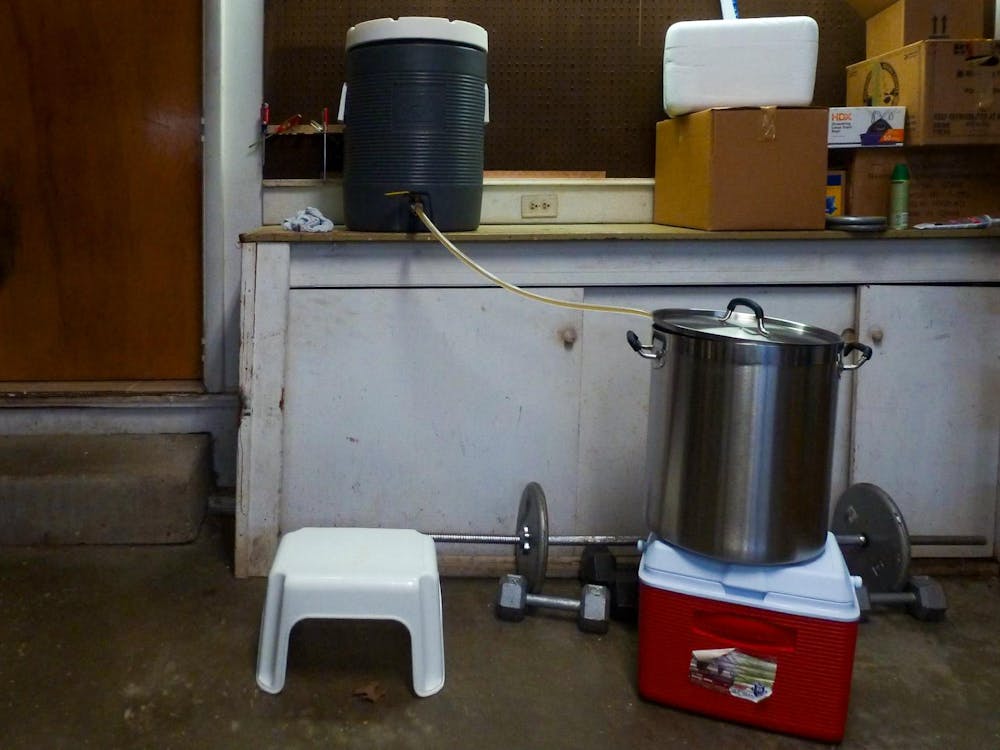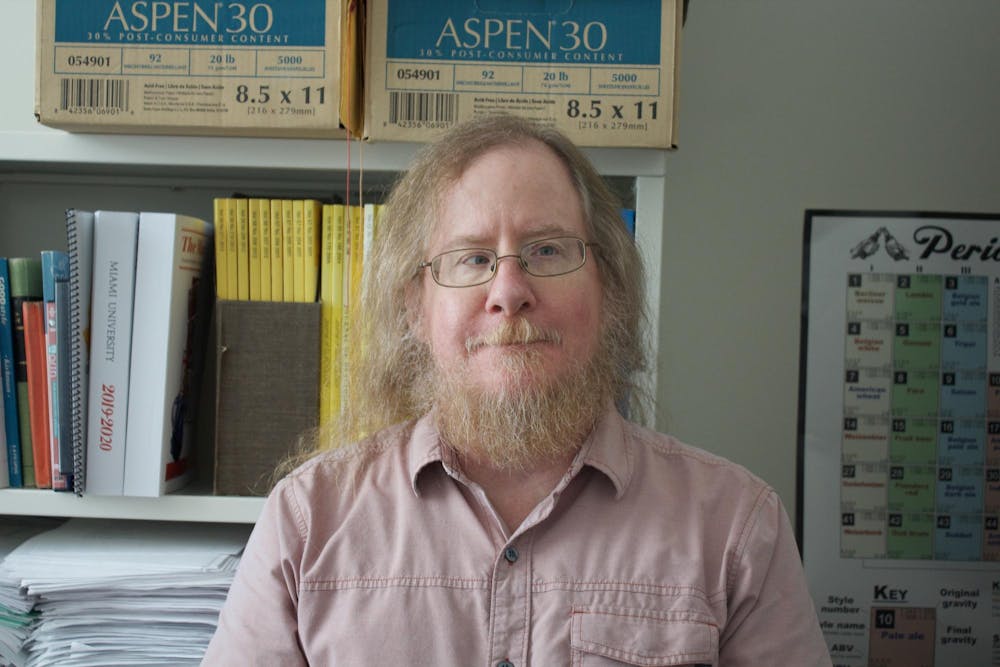Upon arriving in Oxford for his teaching position in 2014, the first thing Todd Dupont did was buy equipment to brew beer.
Growing up in the southside of Chicago, Dupont said he loved the outdoors and “everything about Earth science.” But, it was not until high school, when he heard about the Exxon Valdez oil spill — 11 million gallons of oil in the Prince William Sound, Alaska — that he started to become serious about environmental issues.
“I think it got a lot of folks in my generation’s attention,” Dupont said. “It helped galvanize my interest in environmental issues.”
He received his Bachelor of science in geological studies and master of science in quaternary studies from the University of Maine, Orono. He received his doctor of philosophy in geosciences from Pennsylvania State University.
Dupont became a professor at Miami University in 2014 and is the lead departmental advisor in the geology and environmental earth science departments. This semester, he teaches Ice Age Earth, a geology class about climate change through time; a sprint course of Environmental Geology and GLG 147, an intro seminar for first-year major students.
Maija Siopla, an associate professor and departmental advisor in the department of geology and environmental Earth science, said Dupont is always available to lend a hand to students or fellow professors.
Enjoy what you're reading?
Signup for our newsletter
“He is very helpful and easygoing,” Sipola said. “If you offer, ‘Hey, Todd, I want to go to an event? You want to tag along?’... He'll go along and just chill. [He] definitely loves beer, too.”
Dupont said it was in a research position at the University of California, Irvine, where he first discovered his love of brewing.
“I was surrounded by a lot of really good craft breweries where they make really good beer on a smaller scale,” Dupont said. “I became very interested in the process, so one of my colleagues bought me a book on brewing.”
He said he spent four years reading books on brewing, and decided he would finally start his own when he heard he would be moving to Oxford to teach. Before even unpacking his bags, Dupont started setting up his brewery in his garage.
Dupont said the process of beer brewing can be long, sometimes taking four to six weeks. He starts by buying barley, then runs the grains through a mill to be crushed and then dumped in hot water. This mixture – called wort – does not become beer until beer yeast is added. This is when the weeks of fermentation begin.

Dupont's homemade set up contains parts you can find at any hardware store.
“For me, it's a bit like science,” Dupont said. “You're taking notes, and you're then keeping track of the quality and the ultimate result, and then you're always trying to improve.”.
After fermentation, Dupont is able to put the beer in a keg and carbonate it, or he can add hops, a bitter flower that contrasts the sweetness of the beer.
Kendall Hauer, director of the Karl E. Limper Geology Museum, said he has been working with Dupont for 10 years and is a former home beer brewer himself.
“He's actually really good [at it],” Hauer said, laughing. “I’ve tasted some of his product, and it's acceptable.”
Dupont said he does not have a license to sell the beer, but bottles it up and trades it or shares it with friends and family.
“One time I did exchange some venison sausage for some beer,” Dupont said. “It's mostly just about having fun, so I usually invite people over for barbecue and beer.”




